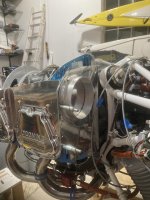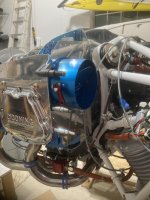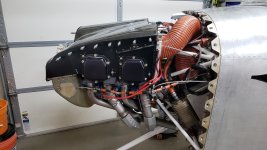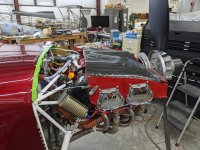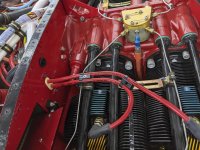Desert Rat
Well Known Member
I'm installing an IO-390 in my RV 7 and am currently working on the baffles.
I was planning to do the Airflow Systems duct with the butterfly flapper and control it via a cable in the cabin, as I've seen other folks do.
However, looking at this, that flange is about twice as long as the simple Vans flange which came in some kit or another.
Also, I'm not thrilled with the lever arm arrangement on the Airflow unit. The shaft isn't splined, so if the set screw comes loose the butterfly will be free to do it's own thing including potentially closing off the airflow to the cooler.
For those of you who have this arrangement, do you really use the flapper to manage airflow, or is it one of those things that you installed but find that you rarely use?
I guess another way to ask the same question would be; since there isn't any provision for airflow control in the similar setup on the RV14, do people with those planes typically have any issue with low oil temp in winter operations?
I'm including a couple of pix of option A and option B in case this isn't clear.
I was planning to do the Airflow Systems duct with the butterfly flapper and control it via a cable in the cabin, as I've seen other folks do.
However, looking at this, that flange is about twice as long as the simple Vans flange which came in some kit or another.
Also, I'm not thrilled with the lever arm arrangement on the Airflow unit. The shaft isn't splined, so if the set screw comes loose the butterfly will be free to do it's own thing including potentially closing off the airflow to the cooler.
For those of you who have this arrangement, do you really use the flapper to manage airflow, or is it one of those things that you installed but find that you rarely use?
I guess another way to ask the same question would be; since there isn't any provision for airflow control in the similar setup on the RV14, do people with those planes typically have any issue with low oil temp in winter operations?
I'm including a couple of pix of option A and option B in case this isn't clear.

